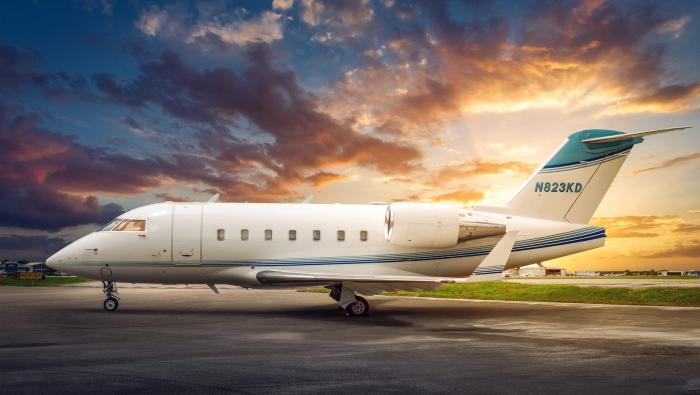Early next year, the Flight Safety Foundation (Booth No. 3532) expects to publish operational guidelines for its members on the conduct of stabilized approaches, according to COO Kevin Hiatt. The guidelines arise from analysis of trends gathered from corporate flight-operational quality assurance (C-FOQA) data.
NBAA describes C-FOQA as “a data-management program that collects, scrubs and processes flight data and generates reports flight departments can use to analyze their operations. The ability to predict high-risk operations or to pinpoint operational areas that need attention can be a hugely important tool.” Analysis of C-FOQA data can highlight exceedances of prescribed performance parameters and thus stimulate remedial measures such as training to enhance operational safety.
FSF has handed over management of its C-FOQA program to data-processing specialist Austin Digital (ADI), which this year was acquired by GE Aviation (Booth No. 3900). Hiatt describes FSF’s experience, which began with about 12 initial operators and now encompasses about 60 aircraft flown by nearly 30 companies, as having been “very successful.”
Although C-FOQA was never planned to be a long-term FSF program, the organization had found itself beginning to compete with its own members, who were offering analysis services to operators, and ADI was seen as a natural home for continuation since the Texas company had been providing analytical services under contract. Companies participating in the exercise have been advised to stay with ADI’s C-FOQA Centerline program or to make alternative arrangements. C-FOQA Centerline is claimed to provide flight-data analysis “without the expense of specialized hardware, software, expert staffing and IT overhead required for in-house installations.”
A business-aircraft FOQA program was first developed by the NBAA safety and FSF corporate advisory committees in 2004, and C-FOQA was developed with ADI in the following year. The initial phase of operation began in late 2005 with two Gulfstream IVs and a Dassault Falcon 900 flown by ALCS Aviation, part of the client-services division of tobacco company Altria, and healthcare provider Merck Sharp & Dohme’s aviation department.
Altria has led efforts to establish a C-FOQA steering committee, comprising users and other interested stakeholders, which resulted in an initial meeting in June 2011. The C-FOQA Centerline users’ group flight data is processed through ADI’s eFOQA event-measurement system, which by late 2010 already had data gathered from 20,000 flights and was generating highly accurate and useful reports.
The FSF international and European aviation committees have been involved in “good discussion” that resulted in many documents on stabilized and missed approaches, said Hiatt. The approach guidelines have been prompted by analysis that showed tailwind approaches were an issue, typically revealed by consideration of factors such as touchdown point and groundspeed.
Maintenance Also Studied
Aside from flight operations, Hiatt noted that analysis of data, usually gathered using quick-access recorders (QARs), has led to several maintenance topics being studied. “The biggest point to make is that technology is not totally understood.” He emphasized that C-FOQA programs can provide good data from all areas of aircraft operations with clear trends emerging from analysis.
The latest product from Avionica (Booth No. 2657), which introduced the first miniature QARs in 1999 and now has more than 5,000 installed in almost 100 civil and military aircraft types worldwide, is the MiniQAR Mk III, launched two years ago. The MiniQAR Mk III permits operators to record Arinc 717 channels and up to three high- and/or low-speed Arinc 429 channels to supplement other data that might be insufficient to support a comprehensive flight-data monitoring or FOQA program, according to Avionica vice president Stylian Cocalides.
Last year French manufacturer Sagem, which is part of Safran group (Booth No. 2579), launched its Cassiopée modular service, offering services such as safety and risk management, maintenance performance, flight operations and operating cost reduction. Sagem said a good example is its iPad-based C-FOQA service for business aircraft and helicopter operators. Cassiopée is based on Safran’s global data services application, which aims to ensure worldwide security and availability of data from flight recorders and other onboard systems.
According to NBAA, recent safety committee action includes continued development of a data-driven safety agenda for business aviation, via its membership in the FSF C-FOQA steering committee and participation in the C-FOQA pilot project. As an example of the viability of C-FOQA, a presentation at last year’s convention by NTSB chairman Deborah Hersman suggested that Hewlett Packard’s flight department had already seen a return on investment from such a program on its Gulfstream V fleet. Operational results following data analysis included improved takeoff profiles, better approach criteria and stabilized approaches.







